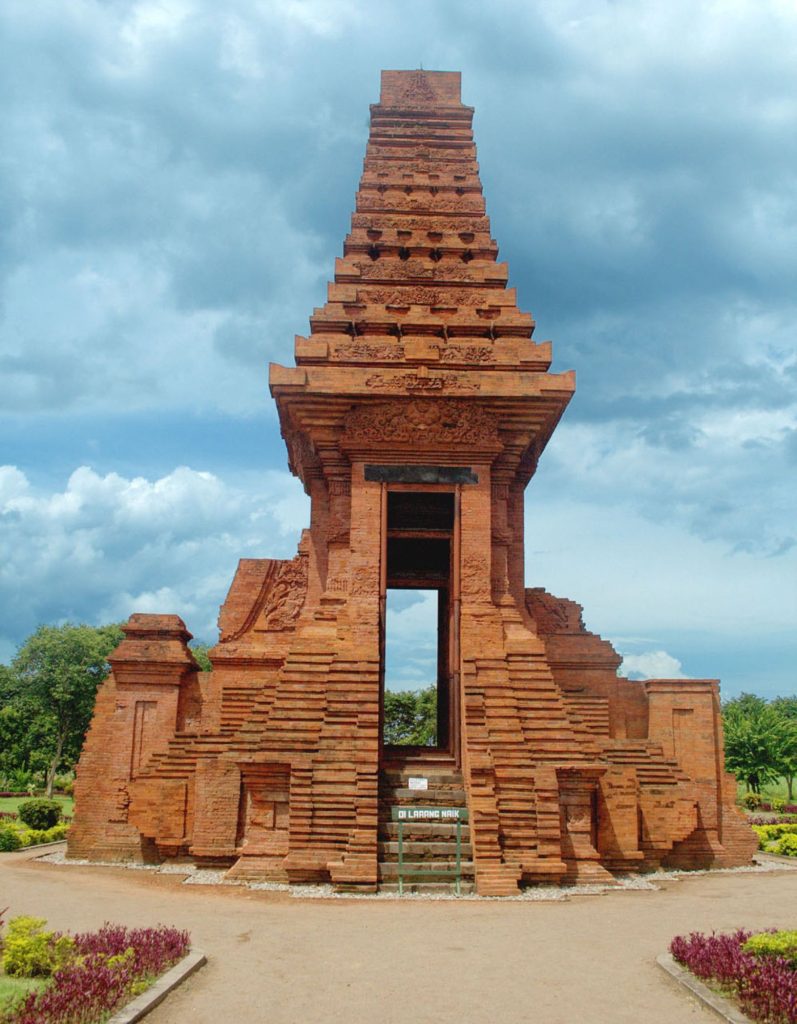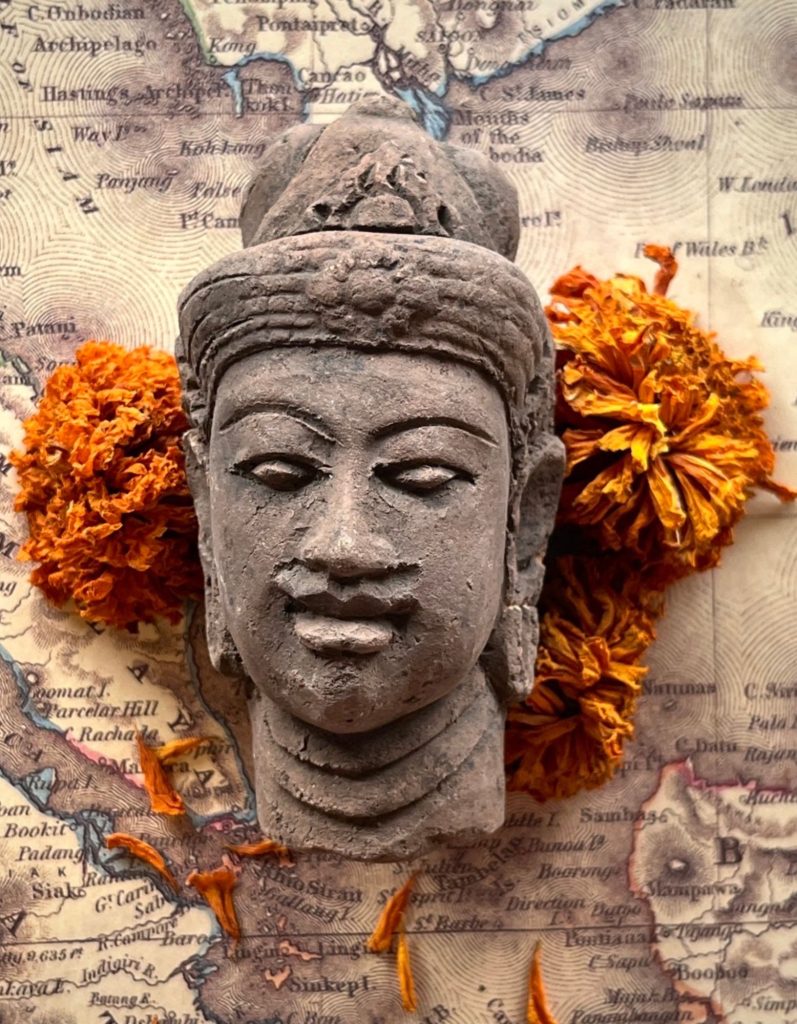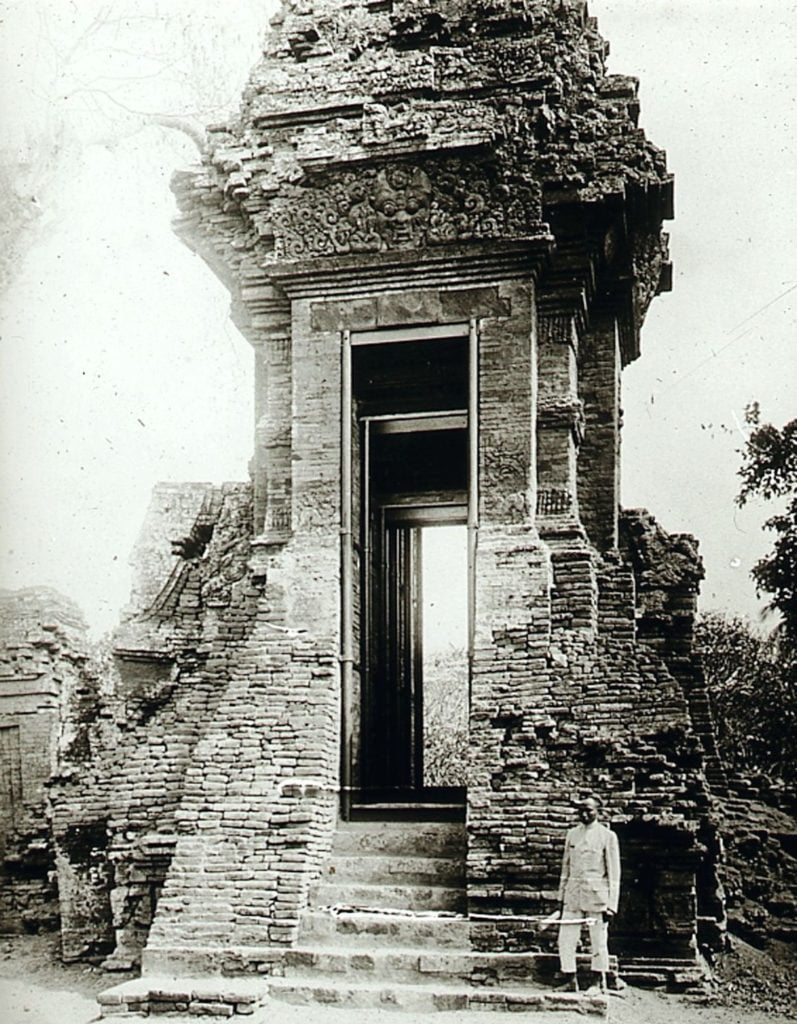Uncategorized
Tracing Back the Ancient City of Majapahit
Majapahit was the largest Hindu-Buddhist kingdom in Indonesia, with its power extending over the Nusantara Archipelago, the Malay Peninsula, and the Philippines. The Majapahit kingdom was founded in 1293 by Raden Wijaya, who was the first king with the title Sri Kertarajasa Jayawardhana. Majapahit was established after the collapse of Singhasari in 1292. The peak of Majapahit’s glory was achieved under the leadership of Hayam Wuruk, assisted by the prime minister Gajah Mada, from 1350 to 1389 CE. Majapahit fell in the 16th century due to conflicts among siblings fighting for throne and the spread of Islam in the northern coastal areas of Java Island.
Majapahit was initially established in Tarik, East Java. In this area, there were many bitter Maja fruits, hence the name Majapahit came from the words “Maja” and “Pahit” (bitter). However, the capital of Majapahit was located in Trowulan for more than 200 years (from the 13th to the 15th centuries). The existence of the Majapahit capital is recorded in the Nagarakertagama manuscript, verses 8-12. Researchers use the Nagarakertagama as a reference to describe the Majapahit capital as depicted by Prapanca. However, there has been no study capable of fully and comprehensively describing the Majapahit capital. One study conducted by Stutterheim concluded that the layout of the Majapahit Palace was analogous to the layout of the Yogyakarta and Surakarta palaces. The construction of the palace complex resembled the design of Balinese palace complexes.

Trowulan is located between Mojokerto Regency and Jombang Regency. Trowulan was built among three mountains: Penanggungan, Welirang, and Anjasmara. Geographically, its location is ideal for settlement due to its flat topography. The Trowulan region is also surrounded by volcanoes, making it a fertile area. It is close to the Brantas River, providing easy access to other areas.
In Nagarakertagama, there is a settlement pattern divided based on social status. The social stratification of Majapahit society is divided into a caste system, including Brahmana, Ksatria, Waisya, and Sudra. Noble residence (Ksatria) consists of two courtyards. There is a gate called Candi Bentar which serves as the entrance to the first courtyard, containing several buildings. There is a fence separating the first courtyard from the second courtyard, used as the residence of the house owner. The concept of “pakuwon” for noble residences is similar to traditional Balinese houses because Majapahit nobles moved to Bali after the fall of Majapahit. The residence of the priest (Brahmana) is depicted in the relief of the second terrace of Candi Penataran with simple house forms. The residences of common people (Sudra) consist of single-row houses without fences, forming a village.
As the center of the Majapahit kingdom, there are sacred areas built in the Trowulan Site, one of which is Candi (temple). Candi is an Indonesian term referring to ancient religious buildings from the Hindu-Buddhist civilization. However, candi is also used to refer to non-religious ancient sites during the Hindu-Buddhist period, such as palace, bathing pool, and gate. Candi is a replica of the residence of the gods, namely Mahameru Peak on Mount Semeru. The construction of temples during the Majapahit period did not use cement to attach bricks but by rubbing the two red bricks together until they stuck together. This technique became one of Majapahit’s contributions to architecture.

In the Trowulan Site, many archaeological remains have been found, including the Wringin Lawang Gate, Segaran Water Tank, Princess Cempa’s Tomb, Bajang Ratu Gate, Tikus Temple, Kedaton Temple, and Brahu Temple. The Trowulan Site also preserves Majapahit terracotta artifacts, such as building elements (wells, bricks, tiles, miniature houses), containers (pots, pitchers, jars, flower vases), human statues depicting different races (Chinese, Indian, Arab), household items (teapots, piggy banks), and production tools (mold, kowi). It is estimated that these artworks were made by local residents because production tools such as grindstones were found.
In addition to terracotta, metal objects such as amerta jars, bells, mirrors, and incense burners have also been found. Trowulan also preserves ceramics from Vietnam, Thailand, and China, indicating international trade activities during the Majapahit era. There are also stone artifacts such as reliefs and statues. Jewelry, musical instruments, and weapons from the Majapahit era have also been found on this site.

Trowulan is an ancient city that was once lost and rediscovered during the governance of Sir Thomas Raffles, who served as the governor-general of Dutch East Indies. He commissioned Wardenaar to observe ancient remains in Mojokerto in 1815. Before Wardenaar’s discovery, the city of Trowulan was in ruins. The reasons might have been political and natural. Political factors resulted from the relocation of the government center to Tumapel in 1451 and the construction of new buildings on old ones as a city restoration effort. Meanwhile, natural factors were caused by the eruption of Mount Kelud.
The Trowulan Site is the only ancient Hindu-Buddhist classical city site in Indonesia. This site is rare and important because it reserves the legacy of Majapahit. Currently, most archaeological remains are incomplete, damaged, or buried underground. Additionally, artifacts and important historical sites have been damaged by urban development and demographic pressure over several decades. The World Monument Fund, a global organization based in the US, declared Trowulan as one of the Most Endangered Sites in the world in 2014.
References:
Akbar, A. (2014). Cultural resources management for a Majapahit Kingdom Site in Trowulan, East Java, Indonesia. Conservation and management of archaeological sites, 16(4), 291-307).
Budianto, E. (2022, September 28). Bagaimana wujud rumah di zaman Majapahit, begini penggambarannya. detikJatim. Retrived from https://www.detik.com/jatim/budaya/d-6317366/bagaimana-wujud-rumah-di-zaman-majapahit-begini-penggambarannya/2
Eni, S. & Tsabit, A. (2017). Arsitektur kuno kerajaan-kerajaan Kediri, Singasari & Majapahit di Jawa Timur Indonesia. Jakarta: Rajawali Pers. DOI 10.1179/1350503315Z.00000000099
Kubontubuh, C. & Martokusumo, W. (2019). Meeting the past in the present: authenticity and cultural values in heritage conservation at the fourteenth-century Majapahit heritage site in Trowulan, Indonesia. International journal of heritage studies. DOI: 10.1080/13527258.2019.1652923
Minister of Cultura and Tourism of the Republic of Indonesia. (2009). Trowulan – former capital city of Majapahit Kingdom. UNESCO. Retrived from https://whc.unesco.org/en/tentativelists/5466/
Sartono, S. & Bandono. (1991). Kehancuran Majapahit dari pandangan geologi. Analisis hasil penelitian arkeologi (AHPA) II. Jakarta: Depdikbud.
Subroto. (1997). Kondisi Situs Trowulan dan usaha-usaha pelestariannya. Proceeding Saresehan Pelestarian dan Pemanfaatan Situs Trowulan. Mojokerto: Suaka Peninggalan Sejarah dan Purbakala Jawa Timur.


